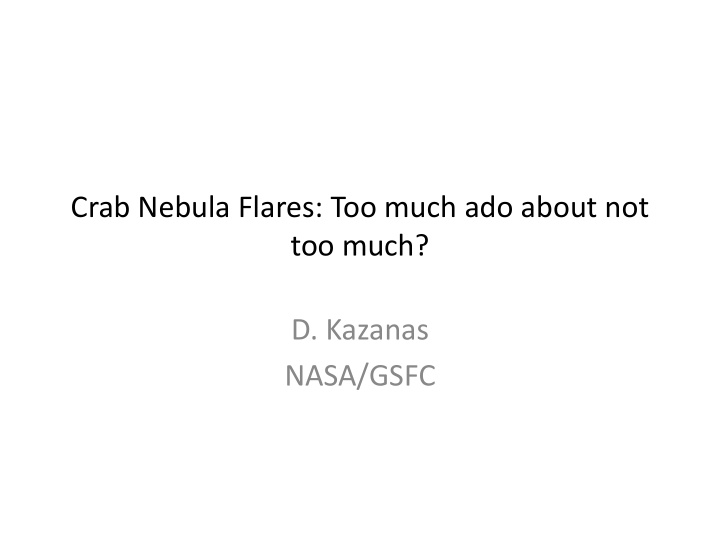



Crab Nebula Flares: Too much ado about not too much? D. Kazanas NASA/GSFC
The Crab Nebula Spectrum Shock acceleration Flares S IC De Jaeger Harding 94
Maximum Shock Acceleration Energy • The shortest shock acceleration time is that of the Bohm time scale, i.e. τ acc ~ R/c ~ κ (γ/ B) ( κ is a constant involving e, c, m e ). • During acceleration, electrons suffer also synchrotron losses on a time scale τ loss ~ γ/( d γ /dt) ~ λ (1/B 2 γ ) ( λ is also a constant). • The maximum electron γ is obtained when τ acc ~ τ loss i.e for B γ 2 ~ ( λ/κ) , and the corresponding synchrotron energy will then be ν ~ B γ 2 ~ ( λ/κ) ~ 50 MeV dependent only on e, c, h, m e . • The existence of photons at energies about 10 times larger has cause sensation and re-evaluation of acceleration processes. • It turns out that the electrons needed to produce these γ -rays are fraction of the Crab polar cap voltage.
Magnetospheric balance between electric and magnetic forces CKF V E _ +
• At the termination shock, the balance can be disturbed. • Bringing the (+) and (-) regions closer could increase E to have particles close the curcuit. • These particles could get a fraction of the total potential voltage across the polar cap. • This will lead to synchrotron emission at energies larger than the maximum obtained from shock acceleration.
• Clearly these are not detailed arguments by any sense. • However, if correct, imply a correlation between the polar cap V and the γ max of PWN (it is not inconsistent with the γ ~ a few x 10^8 of Vela estimated in Pavlov et al. 2003). • Detailed simulations of this process (reconnection?) should bear in mind that different field lines correspond to different values of the polar cap V.
Recommend
More recommend